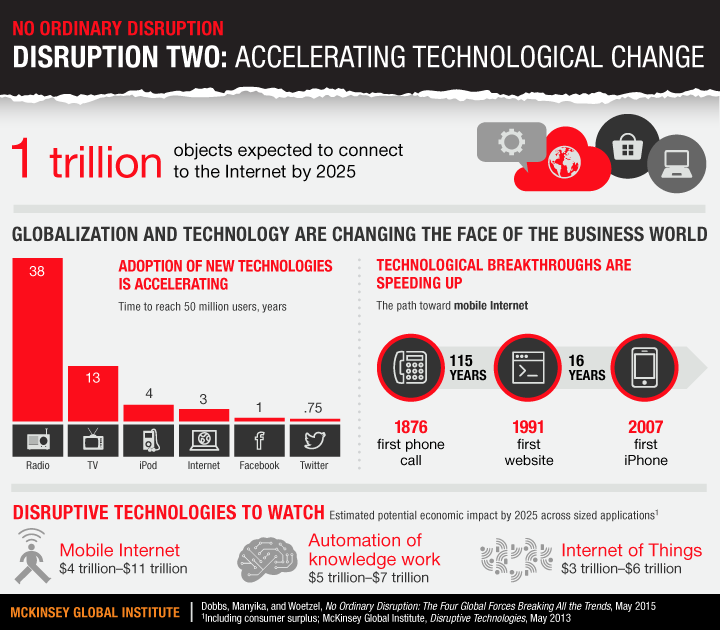From 2006-2008 I spent the majority of my time working alongside the Shell Gamechanger team in The Hague. It was a fascinating exercise on many fronts.
Firstly I was based in New Zealand and working for Innovaro in London for a client which although had some of it’s team in The Hague, could meet anywhere in the world. Inevitably London and The Hague worked fine for us, although Houston or Bangalore would have equally fine. Personally Europe worked well for me as I could regularly visit Singapore on the way – a city with a firm view on the future (but that’s another story).
Secondly, as an organisation Shell is arguably the best user of scenarios in the world. Innovaro’s Technology Futures programme dovetailed into – and fed – the scenario development. Innovaro ran the programme in 2004, again in 2007 and there should be another update in 2010.
The Technology Futures programme built a view of the impact of technology on society in the next twenty years. To construct something that was robust – but still captured enough leading edge thinking – was a detailed process. the summary is as follows : identify which adjacent sectors can impact upon the core business (either postively or negatively), seek out the subject matter experts in these sectors, gather them together for a week and then synthesise the output of the sessions.
We assembled a huge variety of people – from those who are pioneering the creation of life from scratch, to Mars roboticists and architects that are designing massive new green cities in China (the workshops are held under Chatham House rules which means that I cannot name the people or organisations that were represented). The conversations that resulted were compelling, intriguing, confronting, dynamic and never dull.
From the discussion we created a view of the world in twenty years time. What is interesting about this view is that we can track everything back to a spark in a peer reviewed journal, or the commentary of a world expert in a certain field.
In this instance there were a series of outputs, the most visible being the book I co-edited and breathed into life (along with Barry Fox of New Scientist fame). The book is also the only publicly accessible output from the programme, and you can download it here (5MB PDF).
The book is also the only publication to leave Shell without being edited by the PR department and as such is an untouched view of the Technology Futures programme.
The Innovaro Futures programmes are a proven way of seeking out white space opportunities for organisations looking to find new high-growth businesses, but they are also applicable at a macro level. Innovaro has been talking to Governments about the possibility of running the programme at a country level, and this would be a natural fit for the process.
People get intrigued by the programme, but in the interests of blogging brevity I will close this post. Howewver if you are interested to know more, please drop me a mail (now *at* rogerdennis.com)



